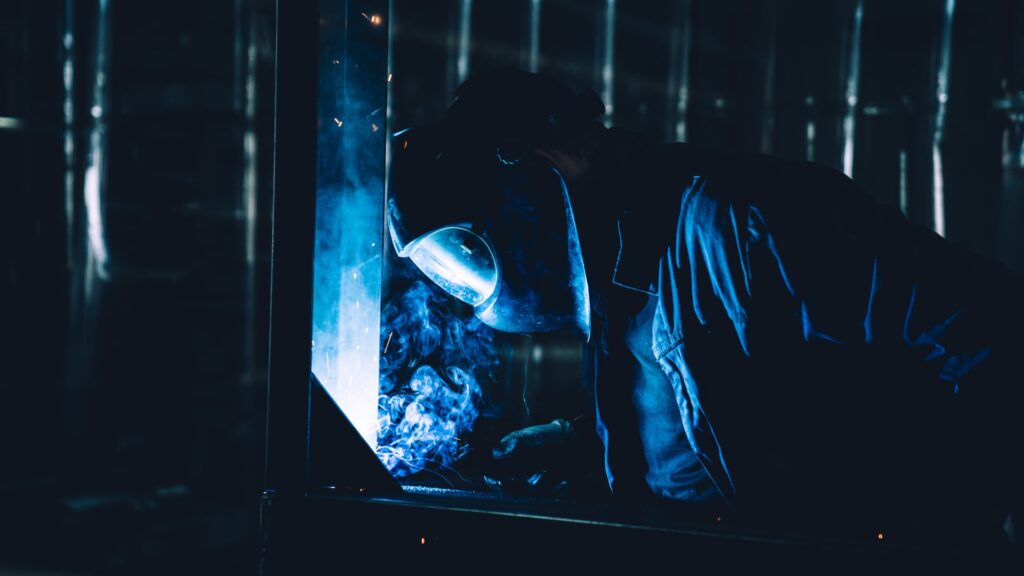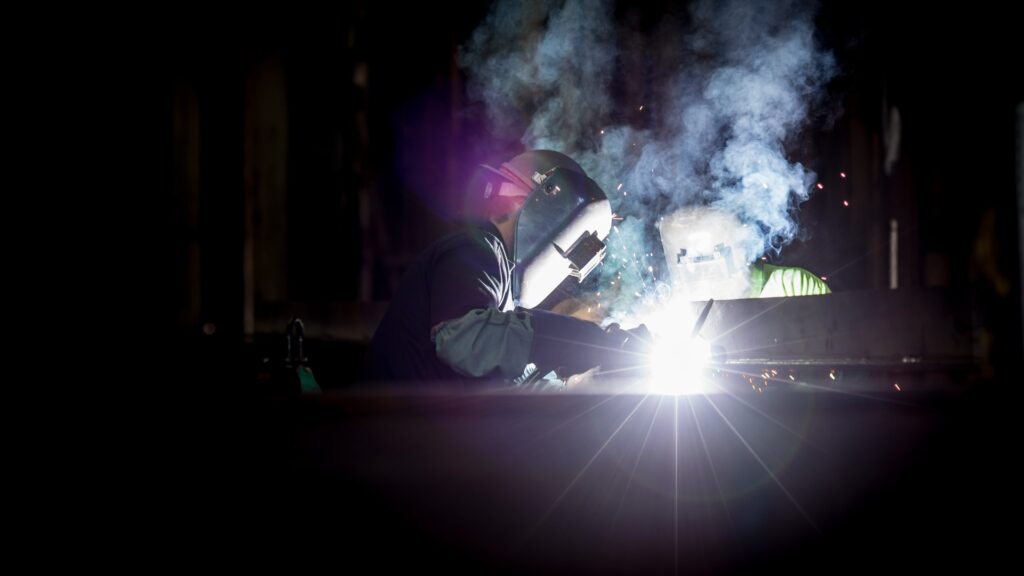Helmets are important for the safety of the operator during welding. With a number of options available in the market, choosing the right one can be quite overwhelming. You need to keep in mind that not all helmets are created equally and different helmets serve different purposes. Thus, it is quite critical to understand your requirements and the environmental needs while choosing a welding helmet.
One of the key features of any helmet is compliance and safety. In America, the head gears must abide by the ANSI Z87.1 compliant, whereas in Canada, they must meet the requirements of the CSA Z94.3 compliant.
These complaints ensure that the lens installed in the helmet protects the eyes of the welder and prevents hazardous things from coming in contact with his face. Other welding equipment must also meet safety regulations. Click here to find the best welding gear made keeping the welder’s safety in mind.
There are a number of other factors that you must consider before buying a helmet. In this article, we have shared a few of them to help you make an informed decision.
Performance of the Lens: Auto-Darkening Lenses

Just as the name suggests, the auto-darkening lenses are capable of changing shades to fit the varied needs of different welders. If a welder wants to see the work done, they can adjust the light of the helmet and the shade of the lens gets lightened.
The sensors placed are helpful in detecting the welder, when it strikes the arc and also darkens the lens to a much higher level based on the process. The benefit of using a lens with the auto-darkening mode is that the helmet is not required to be flipped after striking the arc. Such helmets are very comfortable to get the task done, and also yield better quality results in terms of work. Though, the lens with the auto-darkening mode is more expensive than the other available choices.
Also, once a welder starts their work with an auto-darkening lens, they will find it difficult to carry out their work with the other ones available. The auto-darkening lenses are also available in a variety of shades and sensor options. Usually, the more shades and sensors a helmet has, it becomes easy for the welder to perform a wide range of work with greater ease.
Colour Technology

The growth in optic technology has led to the creation of auto-darkening lenses that allows the light of a wide range to go through a filter. It is known as the “true color” technology.
Before buying your helmet, you must ask the seller about the condition in which this feature occurs. For instance, some of the manufacturers tend to highlight the ‘true color’ technology in an inactive state, which occurs when the sensors fail to detect an arc. The auto-darkening shade in an inactive state is generally a #4 or #3 and it is relatively easy to see through it. True color provides a benefit of the auto-darkening feature transitions anywhere in between #8 and #13.
The true-color technology helps to differentiate between orange and red colors. Helmets made using old technologies have a lot of color saturation, which in turn increases their contrast and makes it difficult to differentiate among different colors. The true color technology helps to reduce the training time. It further reduces the chances of missing or making fine-detailed mistakes. The high definition clarity provides welders with the ability to prevent potential welding defects from occurring.
Moreover, welders wear helmets for a long period of time and thus, looking at blurry things can lead to several health-related issues such as headaches and eye problems. True color technology provides relief from this issue and displays natural colors with great clarity, which in turn helps to boost your productivity.
LightWeight

When it comes to welding helmets, there is a popular belief that they are heavy, making it uncomfortable to work at times. It is in recent years that the industry has pushed the thought of enhancing the productivity and comfort of the welding operators by reducing the size of the head gears. They emphasize on maintaining a high level of safety even after reducing the weight of the helmet.
A welding operator is required to wear the helmet for at least 6-7 hours and hence its weight should be a key consideration. Helmets that are lighter in weight, reduces the strain on the neck and, at the same time, reduces fatigue and also increases comfort during work.
Although, you may think one pound of weight is nothing for a person to hold, the difference is seen when you have to put on that one pound of head gear on, for a prolonged period. Thus, make sure to opt for a lightweight helmet for your welding applications.
Viewing Size

It is another important consideration that you need to keep in mind while buying a helmet. Generally, the viewing size ranges from six sq. inches to nine sq. inches. Wherein, the former is used for small applications and the later is employed for industrial use. The cost of the helmet majorly depends upon the viewing size.
Thus to calculate the overall cost, you need to consider the total overhead welding you have to do. Also, head gears that come with a larger viewing size help in overhead welding by providing better control to the welders.
Conclusion
With so many options available in the market, the task of looking for a welding helmet can be quite daunting. Different factors play different roles and you must consider them all before finalizing any decision. Also, if you are on a tight budget, compromising on one or two factors is recommended to buy the ideal head gear.
In recent years, welding gears have improved significantly and they now have additional features to enhance the productivity of the welders. We hope that the above-mentioned points will help you in buying the best welding helmet.

